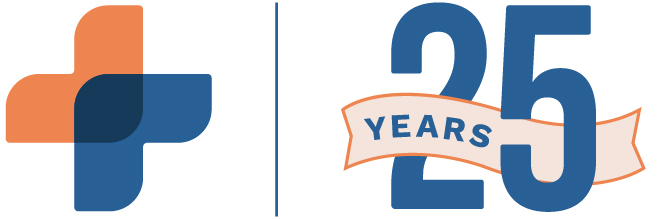The margin errors in medical billing are alarming, ranging from 30% to 80%, according to an article in the Wall Street Journal. With the increase of electronic health records (EHR) and over-inundation of patients during the COVID-19 pandemic, numbers are likely even higher than estimated.
According to the American Medical Association, medical billing errors fall into the categories of fraud and abuse. This means that medical billing errors can have significant negative impacts on your practice, including increased denial rates, delayed payments, severe monetary penalties, and a decrease in the quality of overall patient care.
10 Proactive Steps to Ensure Accurate Medical Billing
To mitigate risk, proactive steps must be taken, and mitigation procedures put in place. Here are 10 steps to avoid medical billing mistakes:
- Verify patient insurance eligibility.
Verifying a patient’s eligibility will avoid default accounts later. Especially for patients who are regulars, it is easy to miss this step. Especially with COVID-19, it is likely that patients’ situations have changed, including the patient’s insurance company, policy limits reached, or the insurance company’s terms of service. For both returning and new patients, it is critical to check with the insurer to confirm coverage dates, benefits, authorizations, etc., which could result in billing errors or result in delays.
- Confirm patient information.
This may seem obvious, but small errors in a patient’s name, birthdate or gender can result in a claim being denied. While a patient may identify with a different name or gender, your practice must capture the information reflected on his/her/their insurance policy. If the patient is not the primary policyholder, the relationship to the policyholder, policy, and group number should be cross-referenced for accuracy. If English is not the patient’s first language, they may be unaware of the differences between name reporting between agencies or insurance companies. In this case, cross-referencing is critical.
- Capture patient portion at check-in.
Another key component to the front-end revenue cycle is upfront patient collections. Although the majority (90%) of physician practices and provider facilities agree that collecting from patients before they leave the office is key, only about half (59%) actually collect from patients while in the office. Providing staff to collect copayments and deductibles may alleviate collection challenges.
This may include providing information before services are rendered such as financial estimates, implementing payment plans, technology at the front desk to process payments immediately, or telehealth payment portals. Prolonged billing and collections can become costly, both financially and in staff time.
- Use up-to-date ICD-10 and CPT codes.
Medical billing codes are constantly changing due to modifications in healthcare regulations. It has never been more important than now to keep up to date with new billing codes as new protocols arise. Make sure your office staff is being trained on the most updated coding books, which are being changed at a quicker rate during COVID-19, especially regarding telehealth.
- Avoid upcoding.
Upcoding can be deliberate or unintentional, but either can result in fines or criminal prosecution. Upcoding occurs when codes are entered into a patient’s bill for services that were not received to inflate the amount owed to the provider. However, if billing staff is not trained correctly, hasn’t kept up with recent changes, or is overwhelmed and makes a mistake, the risks of accidental upcoding are higher.
- Check that the claim is complete.
Check and then re-check. Missing information such as policy number, group plan or missing codes can cause significant delays that may result in delayed or denied payment. Consider “parking” unfinished claims that may prevent you from releasing complete encounters. Then revisit incomplete claims at a later time.
- File claims as soon as possible.
If not filed in a timely manner, an insurance company can deny a claim. By filling on time, it also provides your practice with enough time to dispute any challenges such as a procedure being deemed as not medically necessary. Late claims are the most difficult to appeal.
- Avoid duplicate claims.
Although this may seem obvious, duplicate claims can happen easily if more than one person is entering information. This can also happen if tests or procedures have been canceled or rescheduled. Chart audits can help prevent bills from being submitted more than once. Since high rates of duplicate claims can have severe penalties, it’s crucial that chart audits be thorough. To reduce administrative burden, automation can be made through Practice Management software that handles scheduling appointments.
- Train billing staff.
Taking the time to train billing staff and regularly provide updated training materials will pay off in the long run. If billing staff does not use the necessary protocol or stay up to date this could end up costing your practice severe monetary fines and delays. Make sure that the billing staff understands the different types of insurance coverage and plans. The practice’s collections policies and procedures should be clearly outlined for staff in a training manual, and an established script can be helpful to new trainees.
- Use claim-scrubbing software.
Medical claim scrubbing is an important step of the revenue cycle management process, but manually checking claims before they’re submitted can be both time-consuming and full of error resulting in rejected claims. This error can be easily avoided, invoices can be reimbursed promptly, and less time will be spent rectifying faulty claims by automating using a claim-scrubbing software.
Implement Technology to Avoid Medical Billing Errors
Technology augmentation to your systems will streamline medical billing and mitigate risk to your practice. RXNT’s integrated medical billing and reporting software decreases administrative burden, reduces error, and enables faster reimbursement.
By augmenting your systems, the fluctuating number of patients and shifting regulations during the COVID-19 pandemic are less likely to overwhelm your administrative staff. Integrated technology solutions reduce accidental oversights, duplications, and other high-consequence errors that can be caught before incurring monetary penalties, fines, and delays.
While healthcare policy and regulations are in the midst of rapid changes, RXNT provides real-time updates and automated solutions to reduce risk. Let RXNT help you utilize software solutions so that you can spend less time doing business audits and return to providing the highest standard of patient care.





